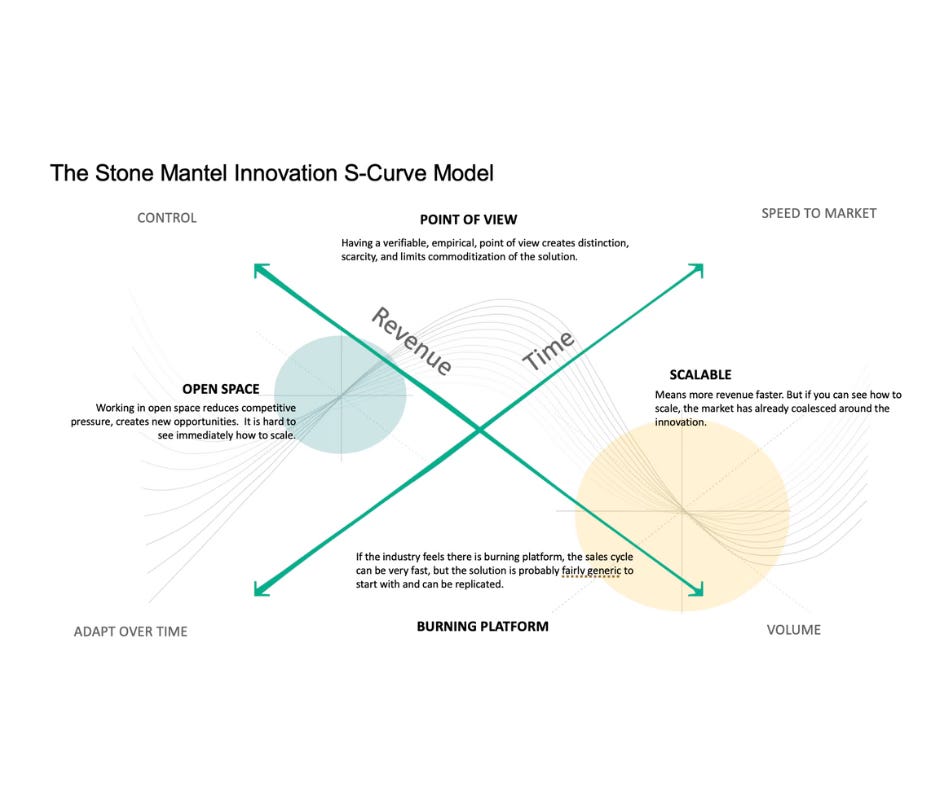The New Strategy Skill: Aligning Silos Around a Point of View
Chapter Three: Principle 2—To Be Compelling Requires a Strategic Point of View
Dear Friends,
Today’s installment is the last one for chapter 3. Wow! If you’ve been reading along you know that we’ve covered a tremendous amount of new ground. You will never hear the phrase, ‘strategic point of view,’ again the same way.
Do you feel prepared to start building POV statements for your company? Do you know how to build a strategic framework to support your POV? Do you get why the POV needs to sit next to the mission and vision of the company and be shared by the CEO/President of the company? Do you understand your role in creating the POV?
The New Strategy Skill: Aligning Silos Around a Point of View
Let’s summarize what has been covered in this chapter. In today’s business environment, where customers want to be treated as individuals and brands have many competitors to deal with, companies must have a strategic point of view that includes the following:
· An insight into the near future needs of the customer
· A description of what the company can do going forward
· The impact of the point of view on the business model
· Principles of the strategy that can be employed across the experience
In today’s world of abundance, differentiation is not enough. To be compelling you need something that goes before the brand strategy.
The strategic point of view statement is not the brand strategy. It’s not the brand promise. It’s also not the vision or the mission of the company. Great CEOs understand naturally how to create a point of view. John Legere, Elon Musk, and Tim Cook are examples.
A point of view is what makes a business model compelling to customers. Today’s customers want solutions that help them improve their performance. So, they are attracted to brands that are innovating toward a future need that customers want. Personal performance is the factor in keeping people engaged with most solutions today, regardless of whether they are goods, services, or experiences.
As an experience strategists, it’s your job to find the near future need, create the point of view statement, describe how the point of view affects the current business model, and help people throughout the company embrace the principles and changes required. To do this, you need expertise in creating frameworks that really work, that explain important aspects of the point of view, and that help people make decisions. You also need the ability conduct primary research—ideally ethnographic field research, data analytics, trend mapping, and scenario planning.
The point of view speeds up your company’s ability to innovate. I shared a framework we developed at Stone Mantel that can help you make a powerful case to senior leadership for having a point of view.
The brand strategy should support the point of view and articulate what is compelling about the point of view to outside audience. For internal audiences, you need to be able to present the insights and the point of view in different ways, depending on the audience. Unlike the mission and vision of the company, the point of view can and should be updated as the company progress and learns more.
In the early days of experience design, researchers and designers created wonderful insights and ideas to fuel their companies. Today, I fear that the CX field has replaced that creativity with bland, often obvious feedback.
Creativity, in and of itself, is not strategic. In fact, creativity without strategy can be detrimental to a business. The experience strategist must think through the given resources of a company, understand the implications of novel insights, and plan for the future.
One of the biggest challenges that we see in companies today is silos. Each part of every business has its own opinion about what the customer wants. Sometimes with research to back them up. Even within the experience functions, there are silos. And more and more companies are moving away from a centralized experience function, not because companies don’t value customers, but rather because of interdepartmental customer turf wars.
It's time to get everyone on the same page. A point of view statement provides the guidance that each business function needs. It should be part of the overall business strategy and the experience strategist should be shaping the statement for the CEO and president of the company.
Reflection: What Insight Should Drive Your Company’s POV Statement?
Imagine that you have been tasked by the CEO to identify a near future of need of your customers that can drive growth for the company and make your business every bit as compelling to customers and investors as Apple’s ‘privacy’ POV. Here are three questions for you to think about:
1. How would you go about identifying the insight or insights?
2. What would include in the strategic point of view statement?
a. Insight?
b. Focus of company?
c. Impact on business model?
d. Guiding principles?
3. What framework would you create to help your company embrace the new approach?





